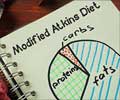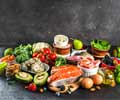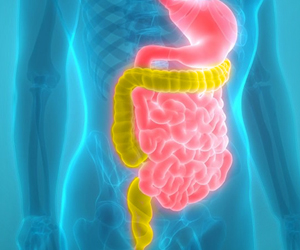A new study has cautioned weight-watchers who swear by the calorie counts that many restaurants in the United States display on their menus by asking them not to believe the numbers.
Researchers at Tufts University's Friedman School of Nutrition Science and Policy found that around half the dishes served in popular US restaurants delivered more calories than stated on the menu, with some packing double the stated energy value.And the researchers found discrepancies in the portion sizes the restaurants said they were serving and the actual size of the meal that showed up on the diner's plate, said the study published in the January edition of the Journal of the American Dietetic Association.
The researchers analyzed the calorie content of 18 side dishes and main courses from five popular sit-down restaurant chains -- Applebee's, Denny's, Olive Garden, P F Chang's and Ruby Tuesday -- and 11 sides and main courses from fast food restaurants Domino's, Dunkin' Donuts, McDonald's, Taco Bell and Wendy's.
Ten frozen meals bought at supermarkets were also analyzed.
On average, restaurant foods were found to contain 18 percent more calories than what was stated on the menu, and frozen meals averaged eight percent more calories than stated on their packaging.
"Those don't sound like huge numbers but that really adds up over time," said Susan Roberts, the study's lead author.
Advertisement
Some of the restaurant items contained more than twice the calories listed on the menu, including P F Chang's Sichuan-style asparagus.
Advertisement
Frozen dinners fared somewhat better, but even there, three meals -- including from Weight Watchers and Lean Cuisine -- delivered around a quarter more calories than stated on the packet.
Restaurant side orders were among the biggest villains, often bringing more calories to the plate, and eventually the waist, than the main food item of a meal.
To illustrate the gravity of the problem, imagine ordering a veggie-cheese omelet at Denny's with a side of dry toast.
The omelet is listed as being a 340-gram serving with 394 calories, but the dish analyzed in the lab by the Tufts team weighed in at 270 grams and 419 calories.
The seemingly innocuous side dish of dry toast was listed as weighing 28 grams and containing 97 calories.
But the dry toast analyzed by the Tufts team was two-and-a-half times heavier, at 72 grams, and packed 283 calories.
"If you're getting 200 calories more, that's the difference between weight loss and no weight loss," Roberts said.
Roberts was inspired to do the study after writing a book called "The 'I' Diet," which took the results of volumes of research she had done during decades as a nutrition scientist and crafted them into a weight-loss program.
"In the process of doing the book I decided to test the scientific menus on myself. I have two menu tracks: one, you cook everything yourself at home, and I did great on that. Lost lots of weight, it was easy.
"Then I switched over to the supermarket track -- no cooking, just pick up the stuff in the supermarket or, if you go out, eat certain meals. Weight loss completely stopped.
"I came into the lab one day and said, 'Something's not right. I don't believe the numbers in these foods.'"
A second study is being set up to delve more deeply into the truth behind the calorie-counts.
Source-AFP
RAS











